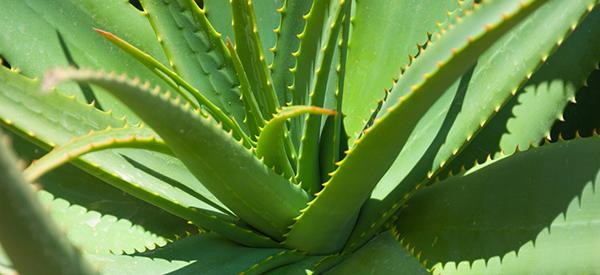
Aloe Vera
Aloe Vera (Aloe vera or Aloe barbadensis) is a succulent and one of more than 400 species of aloe found worldwide. Given this aloe has been grown for over 4,000 years for its health-giving properties, it’s no surprise that one of its common names is Medicinal Aloe.
Other names are True Aloe, Burn Aloe, First Aid Aloe, Indian Aloe, Barbados Aloe, and Chinese Aloe. These all hint at the health-giving properties and the regions the plant is native to.
This attractive, flowering aloe can be grown in the garden – if the conditions are hot enough – or as an indoor plant.
The history of Aloe vera
There are written records recording the medicinal use of Aloe vera dating back to 2100 BC in Mesopotamia. In 1550 BC the Ancient Egyptians used this plant to treat both internal and external symptoms of a range of health problems. By 70 AD the Ancient Greeks were using this succulent for hair loss and to treat wounds.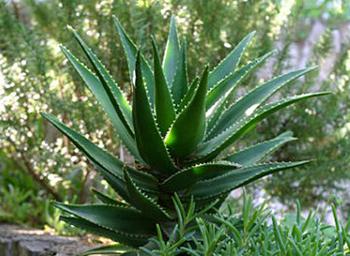
By the middle of the 17th century, there were English translations of the writings of the Ancient Greek healer, Dioscorides. 1820 saw the earliest US mention of the plant’s topical use to combat skin problems.
At the beginning of the 20th century and the end of WWII, this aloe was used to treat radiation burns and other health problems.
Aloe vera is now the subject of a range of studies and is used in many countries to treat health problems and in skin and hair products. Some even claim that this plant is now the most used medicinal plant.
Where this plant is found
This aloe species is thought to originate in the southern regions of the Arabian Peninsula. Some sources claim they come specifically from Oman. They have now been introduced to several continents and grow in areas that are rocky and dry and at an altitude of 4,265 – 8,530 feet / 1,300 – 2,600 meters.
As a result, you will now find this plant in Africa, Indo China, US, South America, Mexico, Central America, Cuba, Middle East, Europe, Gulf States, Saudi Arabia, the Mediterranean, Caribbean Islands, and Australia. And it grows very easily indoors in pots.
Related: The Complete Map of Edible Plants: Find Out What You Have in Your Area! (Video)
How to identify Aloe vera
Like all aloes, Aloe vera is an evergreen that grows in rosettes of leaves. This perennial usually has a shrubby growth pattern, but some individual plants may be form mats. They reach a height and spread of 3.3 feet / 1 meter. They are slow-growing plants and will take 5 – 10 years to reach this size.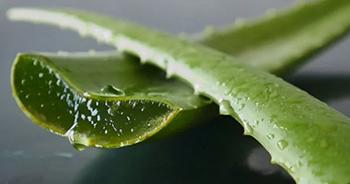
- Leaf: The leaves are fleshy, narrow, blade-shaped, and have sharp spines along the edges of the more mature leaves.
 They are grey or dull green and often have white spots on their surfaces. The colorless gel that is so prized is found in the inner leaf.
They are grey or dull green and often have white spots on their surfaces. The colorless gel that is so prized is found in the inner leaf.
- Flower: The flowers bloom in summer and form in clusters along a tall stem.
They are yellow with a green tinge and tubular.
- Seeds: The flowers form elongated pods that are green initially and dry to a light green or pale brown.

They contain light brown, irregular seeds that can be used for propagation.
The overall size of the plant and the coloration of the leaves are perhaps the most distinctive feature because most aloes have similar growth patterns, flower structures, and seeds.
How to grow Aloe vera
You can grow Aloe vera in your garden if it, and your area, can meet the essential requirements of these succulents namely:
- Full sun
- Well-drained soil
- Loam or sand soil types
- Neutral or alkaline soil pH.
These plants require hot, dry conditions so they are not an outdoor plant option if you live in an area with cold winters and/or high rainfall. However, you might be able to have an aloe outside during summer if it is in a container that can be brought inside in the cold months.
You can either purchase a potted plant or propagate from seed. If you wish to grow from seed, you need to:
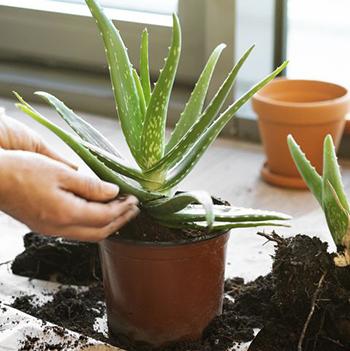
- Sow seeds in either standard, loam-based potting soil mixed with perlite or building sand or in cactus potting mix
- Only use seed trays or containers that have numerous holes at the bottom
- Grow the seeds under glass
- Water the seeds very sparingly and only moderately once they have germinated
- Plant the young aloe(s) out when they are robust enough and conditions allow.
In terms of ongoing care, you could use a liquid fertilizer twice during the growing season, but it is not essential as these succulents are hardy. Pruning is not required and too much water can weaken or even kill these plants.
Aloe vera, like many aloe species, are usually disease-free. However, they may attract mealybugs or scale insects of some kind. Keep an eye out for them and treat them appropriately.
Care of indoor aloes is a little different. Firstly, they need bright light, so a suitable windowsill is best. Secondly, allow the soil in the container to dry out completely before you water. When you do, drench the soil, and then stand the container where the excess water can drain freely and fully. Finally, if you want to use a fertilizer, chose a phosphorus-rich, water-based one and dilute it to ½ strength.
Get Your Own Medicinal Seeds, Last 30 Packs Left
How to harvest this plant
Harvesting from aloe requires care but it is not a complex process. Pull the leaf outwards and away from the plant. Cut the leaf off at the base where it is white rather than green.
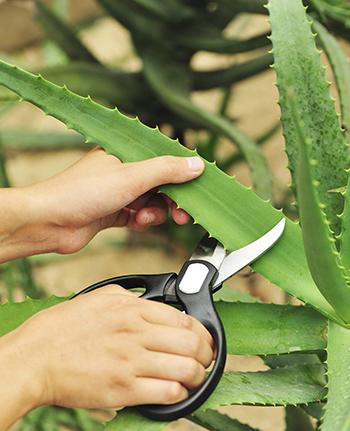
Get as close to the stem as you can without damaging the stem.
You can harvest at any time of the year. However:
- Don’t harvest from small, young plants as it may compromise their health
- Only harvest leaves around the outside of the rosette, not the new inner leaves
- Don’t remove so many leaves that the plant can no longer synthesize adequately or regenerate by growing new, central leaves.
As with any sustainable harvesting, you need to ensure that the plant remains healthy and can continue to grow and produce new leaves and flowers when it is mature enough.
What Aloe vera is good for & the natural remedies made from it
Broadly speaking, Aloe vera is used in three categories: health, beauty and cosmetics, and food and drinks. This versatility is down to the multitude of active ingredients:
- Amino acids
- Anthraquinones (organic compounds of various kinds)

- Calcium
- Copper
- Enzymes
- Iron
- Magnesium
- Polysaccharides
- Potassium
- Sodium
- Vitamins A, B-1, B-2, B-3, B-6, B-12, C, and E.
Over many centuries and today, this aloe is used for a range of remedies, most of which are applied topically. Clinical studies are yet to do a lot of work in terms of the medicinal value of using this plant internally. In fact, there are concerns about this which as discussed in the final section of this article.
The list of applications of Aloe vera when applied topically include: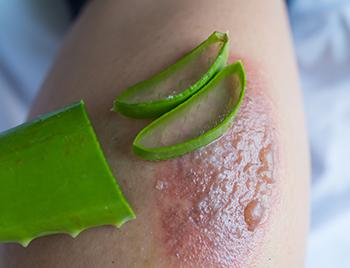
- Speed up healing in first- and second-degree burns
- Aid healing of minor wounds
- Ease mild psoriasis
- Reduce the infection and inflammation associated with acne, skin rashes
- Soothe sunburnt skin and aid healing
- Moisturizes skin, scalp, and hair.
There is now increased interest in, and study into, the value of ingesting the gel or inner portion of the leaf. This is thought to: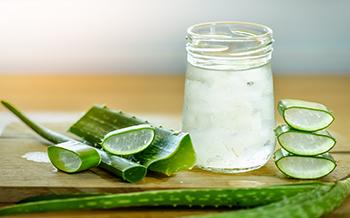
- Aid digestion and soothe the mucosal lining
- Boost the immune system
- Relieve mild to moderate pain that is caused by inflammation
- Reduce cholesterol
- Lower blood glucose/sugar levels.
It’s important to distinguish between the gel and the juice/latex obtained directly from the plant. The gel is clear and odorless. The juice that seeps from cut leaves is yellow, very bitter, and has a potentially harmful powerful laxative effect.
There are several forms of aloe that you could make or purchase: gel the inner leaf only, concentrate (made from the whole leaf and mixed with something), or powder (loose to add to foods and drinks or in capsules to swallow whole). Which one you opt for will be determined by why you want to use aloe.
Related: 1 Cup Before Bed Shrinks Belly Fat All Night (Video)
What parts of the plant are used in remedies?
In broad terms only the leaves are used, either the inner gel only or the whole leaf. The flowers have no therapeutic value. The seeds are useful for propagation.
A DIY Aloe vera recipe
The first crucial stage in any home remedy or recipe involving aloe is preparing the fresh leaves. The process is as follows:
- Slice off the sides of the leaf to remove the spikes (but not too much of the leaf)

- Place the leaf curved side up and remove the outer layer with a knife or vegetable peeler

- Use a sharp knife to remove the layer of clear, inner gel. Take care to remove any green skin. (Yes, the inner gel is slippery and requires care and patience!)

- Cut the gel into small pieces.
If you refrigerate the cubes, they will last up to 7 days. Although there are several things you could do with the gel, an Aloe vera face mask helps to moisturize skin and address issues such as acne, fine lines, irritation, and it exfoliates too.
Ingredients
- 1 tablespoon fresh aloe gel
- 2 – 3 drops fresh lemon juice
- 1 tablespoon coconut oil or honey.

Method
- Place the gel and coconut oil into a bowl

- Add the lemon juice

- Blend the mixture thoroughly.

How to use
- Gently smooth the mixture over your face, avoiding the area around the eye, and on your neck
- Leave the mask on for 20 minutes
- Rinse with warm water and pat dry.
Note: If there is any burning, rinse the mask off and exclude the lemon juice next time as it can irritate some people’s skin. If the irritation is marked or prolonged, do not use aloe again as you may be allergic. If necessary, seek medical assistance.
What plants resemble Aloe vera?
There are two plants that are sometimes confused with Aloe vera. However, the differences outnumber the similarities:
| Feature | Aloe vera (Aloe vera) | Agave (Agave americana) | Spoonleaf Yucca (Yucca filamentosa) |
|---|---|---|---|
| Size | Reaches a height of 3.3 feet / 1 meter | Reaches a height of 6.6 feet / 2 meters | Reaches a height of 10 feet / 3 meters |
| Leaves | Fleshy, grey-green with white spots, narrow, blade-shaped with sharp spines along the edges | Green, spiky, fleshy but fibrous, broader, borders are a paler green, spines along the edges | Flatter and glossier than aloe leaves and there are no spines along the edges |
| Flowers | Yellow with a green tinge, tubular, form in clusters along a tall stem | Short, tubular yellow flowers in upright clusters off stems from the main stalk | Large bell-like white flowers in loose, branching clusters |
| Medicinal | Yes, for a range of ailments and symptoms | Yes, for constipation and arthritis | No, used as food (flowers and young shoots) or in gardens |
Once viewed and examined these essential differences in leaf and flower shape and color make it easy to tell these plants apart and not make identification errors.
Warning & cautions
There is not very much concern over the topical use of Aloe vera gel. However, this is not the case when it comes to ingesting aloe, especially the whole leaf or the sap/juice/latex which can cause several significant problems:
- Can cause potassium depletion and electrolyte imbalances and, potentially, cardiac damage
- May worsen digestive conditions such as ulcerative colitis
- May cause kidney problems
- Can cause severe diarrhea.
Even with the topical application, there may be adverse reactions in individuals who experience an allergic reaction.
As with any addition to your diet or wellbeing program, check with your healthcare practitioner before you use aloe topically or internally!
How to Make a Healing Salve with Cabbage and Aloe Vera
Erratic Blood Sugar? Never Eat This Veggie (Video)
How to Make a Natural Deodorant Stick






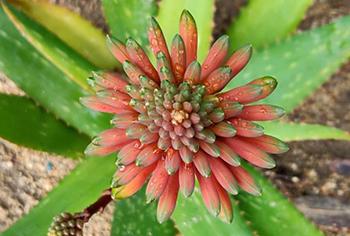 They are grey or dull green and often have white spots on their surfaces.
They are grey or dull green and often have white spots on their surfaces.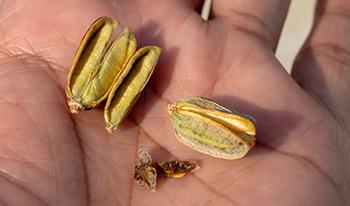
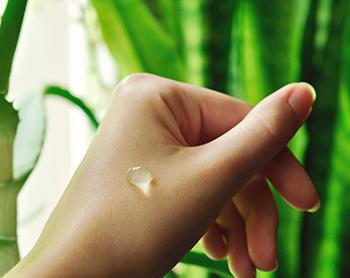
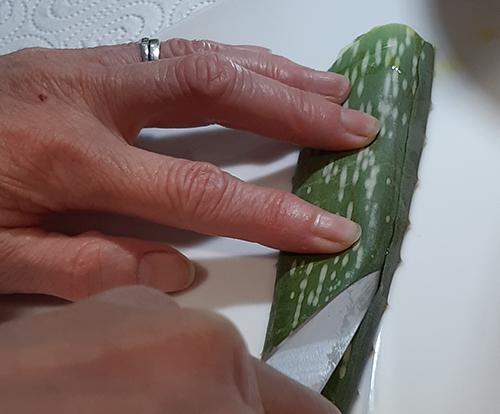
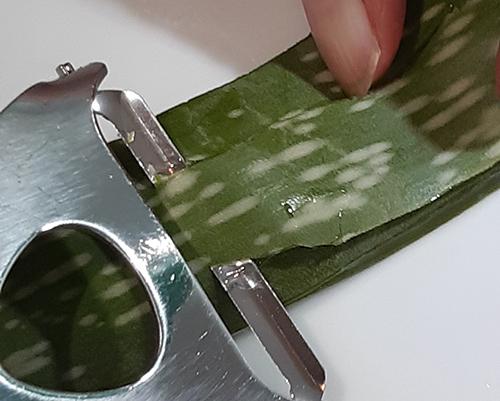
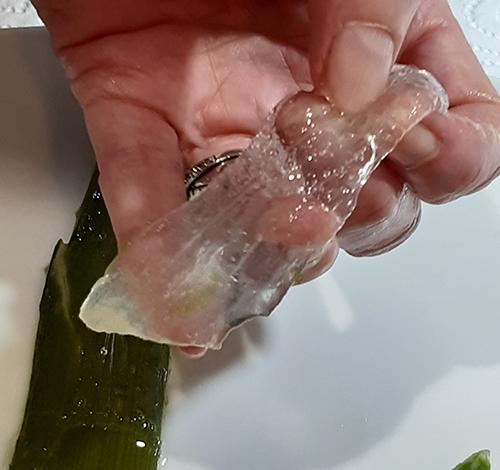
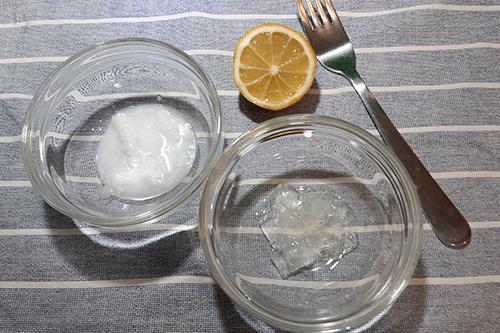
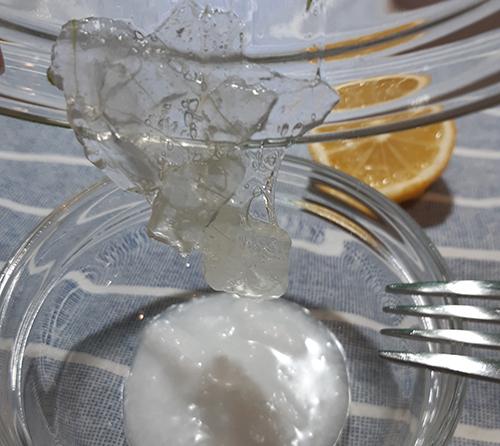
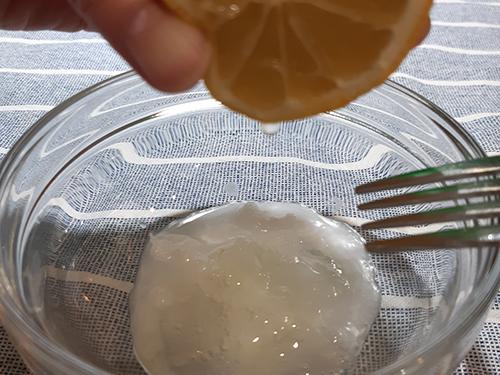
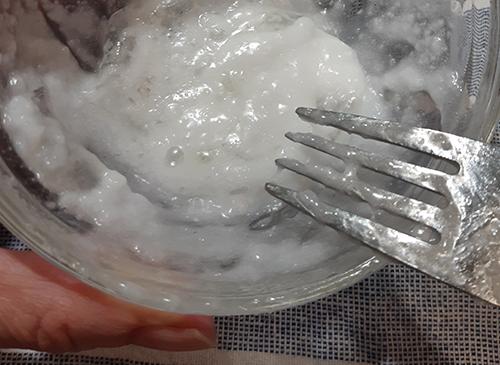
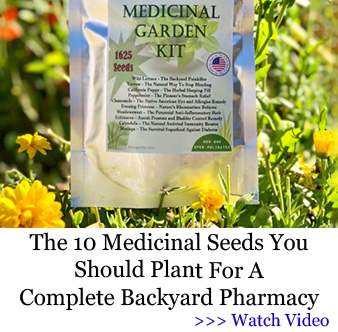
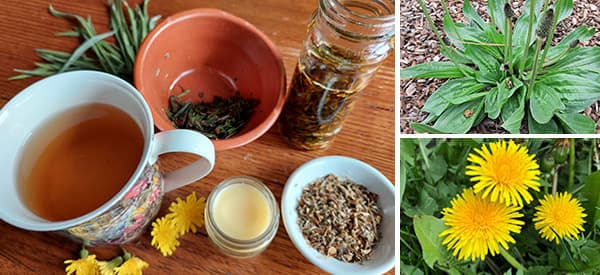
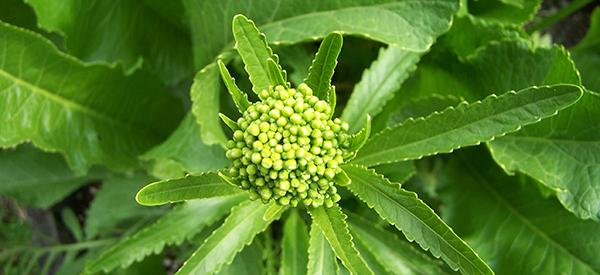

How to use aloe for scalp psoriasis?
Hi Grover,
Thank you for your comment.
To use aloe vera on psoriasis, apply the aloe vera gel to the affected area of the skin.
In this case, rub the aloe vera gel into your scalp and hair. After letting it sit for an hour, rinse the gel off with a mild shampoo. You may need to do this several times a day for a few weeks in order to notice a difference. However, be aware that sometimes using aloe vera gel for too long can cause redness or discomfort at the site of application.
God bless!
I’ve been using George’s Aloe Vera juice for a long time, 1/4 cup a day without any problems, no taste, recommended by a healthcare individual because I had a problem with diarrhea. They also make a gel that I use for different skin care recipes. This brand is usually found in Health Food stores. Highly recommend.
I love George’s Aloe Vera! I drink 4 oz a day (2 oz in the morning, 2 in the evening) for my GERD. It’s amazing and it literally has been a life changer. It was like I used to get heartburn from drinking water, nothing was safe to eat or drink. I did research and found George’s. I find that it’s wonderful for your skin as well and I feel like my digestion has gotten much better. I didn’t know they make a gel, will have to check that out. Thanks so much for sharing that info!
Oh and I just realized it’s so great because unlike using aloe straight from a plant, George’s is Anthraquinone free. That’s what causes all the issues. Well that’s logical! 🙂
yup, there are some of us that can’t even use a product that has aloe in it. So, that diminishes what we can use for toothpaste, shampoos , bar soap, face creams, etc.,
Disappointed – expected a “remedy” recipe to concoct for internal benefits but a mask recipe? Kind of lame…
I wash and chop my aloe from whole stem. Submerge in 100% vodka. Add in a 1/2 c of honey. Leave in fridge for 7 days and strain. I take one shot daily. No side effects from me ingesting. Along with that, I take homemade pineapple vinegar, with the mother and have also dissolved egg shells from my chickens in it (for vitamins and minerals) a shot daily. My gut feels clean. I no longer have any gut problems. 🙂 There are 75 types of nutrients in aloe. 20 minerals and 12 vitamins. High in A, C and E. I’m the ginny pig I guess.